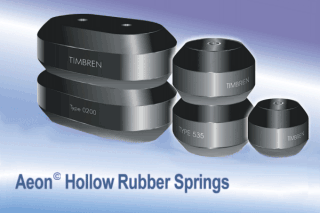Toyota News Wednesday – Supermodels, Media Fiascos, and More
Today’s post will tackle three topics:
- Swimsuit model Rianne Ten Haken meets the Lexus LFA
- A member of the media wonders why people keep listening to Sean Kane
- The Toyota Prius crushes new Chevy Volt in “Greenest Car” ratings
First up, watch this swimsuit model meet the new Lexus LFA (while wearing a swimsuit, no less)

Not much to say here – just fun video to watch. Read more…
Are All Chevy Truck Guys This Dumb?
OK, so obviously I just asked a stupid question. While there are certainly dumb Chevy truck owners, the vast majority of Chevy truck owners are just like everyone else.
Still, videos like this one make you wonder:

Ya – that just happened. Here’s what I see: Read more…
Timbren AEON Hollow Rubber Springs
The Toyota Tundra was designed from the outset to offer an exceptional amount of towing and hauling capability, but like all street vehicles it does feature some compromises built into its platform. In order to make the Tundra comfortable enough to drive on the street, its suspension system can’t be as stiff as that of a commercial or purpose-built cargo vehicle. This means that in certain situations – heavy-duty snow plowing, max-sized trailer towing – the vehicle’s front or rear suspension might sag.
Timbren manufactures a line of suspension components designed to help fight against the tendency of stock suspensions to sag under load without increasing harshness or bounce during daily driving. Timbren’s solution for the Toyota Tundra is its AEON Hollow Rubber Spring, a product which has been on the market for three decades and which is produced for a wide range of different industrial and commercial applications as well as for passenger vehicles.

Timbren AEON Hollow Rubber Springs
I spoke with Andrew Hodgson at Timbren to get a better idea of exactly how AEON springs could benefit Tundra owners looking to beef up their suspensions. Read more…
King Of Hammers Is In Two Days – Race For Access Fundraising Drive
King of Hammers (KOH) is one of the coolest truck racing events in the world (right up there with the Baja 1000 and the Dakar Rally) because it combines two difficult off-road activities – high speed desert racing and extreme rock crawling – into one difficult day. The challenge for participants is to design a rig that can complete both portions of the race in the fastest time possible…and that’s a bit of a pickle.
Note: While the race itself is fascinating, let’s take a moment and note that the race is only possible because the Bureau of Land Management (BLM) grants use of some of the land used in the race…I’ll come back to this topic in a minute.
NHTSA and NASA Say Toyota Electronic Throttles Are Just Fine
Today, NHTSA announced that Toyota’s electronic throttles aren’t responsible for any instance of unintended acceleration – at least not any instance that NHTSA could study. According to Department of Transportation Secretary Ray LaHood:
“The jury is back. The verdict is in. There is no electronic-based cause for unintended high-speed acceleration in Toyotas. Period…Our conclusion — that Toyota’s problems were mechanical, not electrical — comes after one of the most exhaustive, thorough and intensive research efforts ever undertaken.” [From Detroit News]
Let me say that one more time: after one of the most exhaustive, thorough, and intensive research efforts ever undertaken, NHTSA couldn’t find one flipping thing wrong with Toyota’s electronic systems.
This news comes as no surprise – in July 2010, early results from the NHTSA investigation were leaked to the New York Times. These early results showed that, in the vast majority of cases, unintended acceleration was caused by “pedal misapplication” (that’s safety-nerd-speak for “foot on the wrong pedal.”
NHTSA’s team of investigators, working with experts from NASA, couldn’t find one single shred of evidence to support accusations of electronic throttle problems.
Not one.
It turns out that the early analysis offered – over-sized floor mats, improperly placed floor mats, the rare “sticking pedal”, and driver confusion – were indeed the cause of all of these complaints. The questions are, now that this crisis is over:
- What will Toyota do to put this information in front of the public?
- How many people who argued that Toyota was at fault – or at the very least got caught up in all this mindless hysteria – will admit they were wrong?
- How many people will ignore this information because it suits their financial purpose?
Sean Kane, a supposed “auto safety” consultant, continues to say that Toyota’s electronics are at fault (link). This is the same Sean Kane who gets his checks from product liability lawyers suing Toyota for billions…but why is anyone listening to him now that he’s clearly been proven wrong? Read more…


